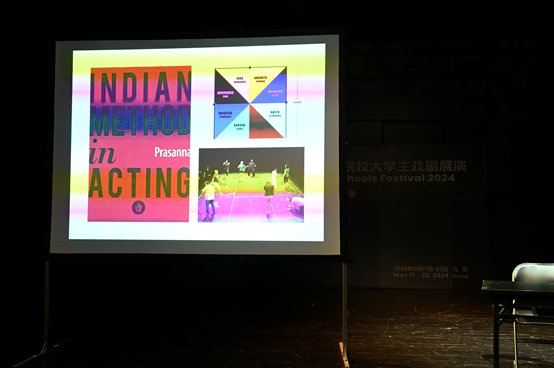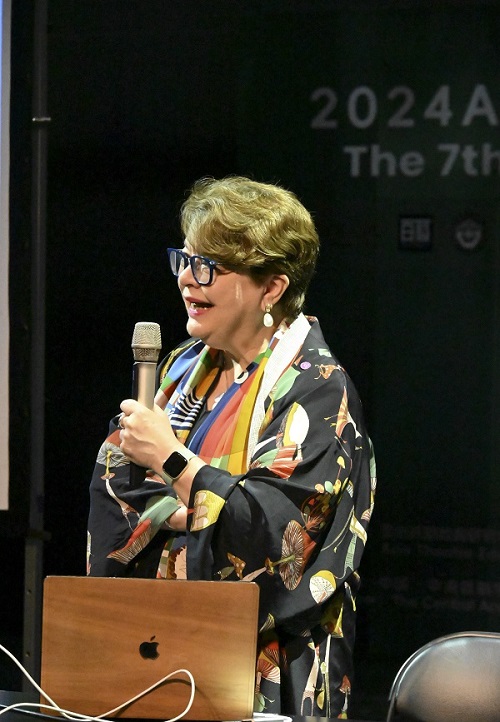From May 18 to 21, the 7th Asian Theatre Schools Festival was hosted by the Asian Theatre Education Centre (ATEC) and organized by the Central Academy of Drama, during which magnificent productions were showcased and informative workshops were conducted. In a short period of 4 days, students and teachers from both China and international institutions engaged in cultural exchanges and dialogues, appreciating the charm of diverse ethnic theatre traditions and sharing in the celebration of stage art.
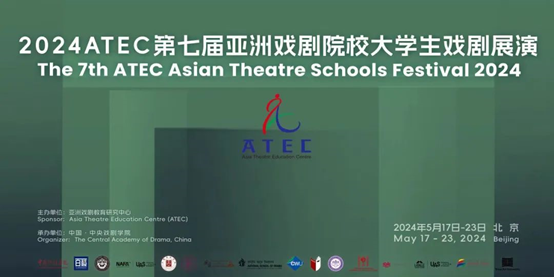
--------------------------------STAGE PERFORMANCES--------------------------------
FORGING THE SWORDS, by the Central Academy of Drama, China
On the afternoon of May 18, the Central Academy of Drama presented the play FORGING THE SWORDS at the proscenium stage theatre in the Theatre Centre of the Changping Campus as part of the 7th Asian Theatre Schools Festival. This production was written by Huang Shiyang, a 2019 doctoral student in the Drama Literature Department, and directed by Yang Fengrui, a 2023 doctoral student in the Drama Directing Department at the Central Academy of Drama.
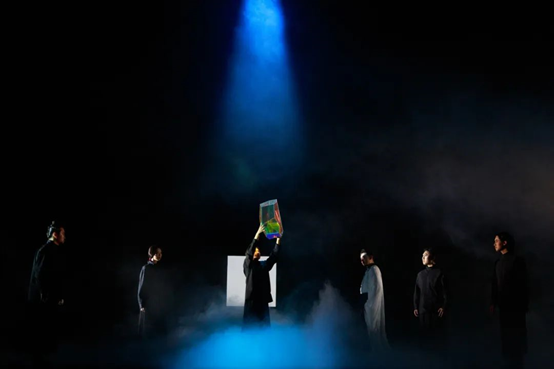
The stage adaptation of the novel centres around the theme of FORGING THE SWORDS, unfolding rich and imaginative scenes while adding dramatic elements to a story that’s centered on vengeance. The performance infused the absurd and highly imaginative mythic legend with Chinese aesthetic expression and philosophical thought. Through the development of the plot, the audience was invited to reflect on personal values, the spirit of chivalry, and the meaning of revenge, embarking on a journey of inner exploration.
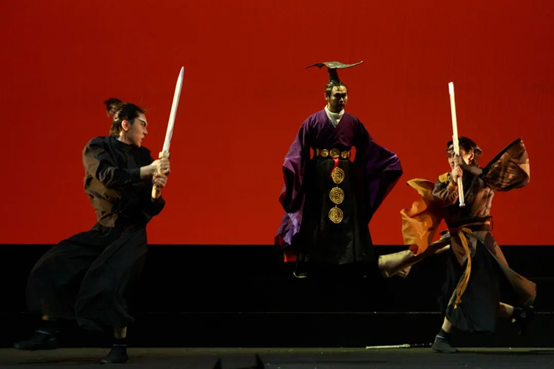

The creation of this play was inspired by the theme of the Asian Theatre Education Centre (ATEC), which aims to showcase the charm of traditional Asian theatre arts. The creative team broke conventional performance forms by skilfully integrating various elements such as traditional Chinese opera, dance, music, and puppetry. Using the play as a vehicle, they conveyed unique Chinese emotions and memories. For instance, in the scene where Meijian Chi, Yan Zhiao, and the King of Chu brawled in a fierce battle in boiling water, the performance combined elements of traditional Chinese Nuo opera, lion dance steps from Peking Opera, and aesthetically intriguing puppetry. This not only highlighted the actors' strengths and characteristics, enhancing the diversity and inclusiveness of the stage, but also elevated the audience's live experience.



After the performance, the creative team of FORGING THE SWORDS held a post-show discussion, engaging in sincere and honest dialogue with the audience to explore the spiritual core behind the play and their creative journey.
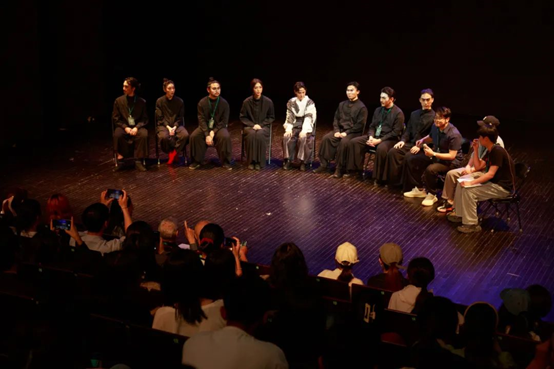
THE BLUE BIRD, Nanyang Academy of Fine Arts, University of the Arts Singapore
On the evening of May 18, the Nanyang Academy of Fine Arts from Singapore performed Maurice Maeterlinck's classic play THE BLUE BIRD at the thrust stage of the Central Academy of Drama’s Changping Campus Theatre Centre. This innovative adaptation of the original work transforms the abstract theme of ‘searching for happiness’ into a tangible journey of a brother and sister seeking the blue bird to cure their mother's illness, conveying messages of love, courage, and faith. The actors' passionate and wholehearted performances immersed the audience in the scenes, fostering a belief in the beauty and miracles awaiting to transpire in the world.
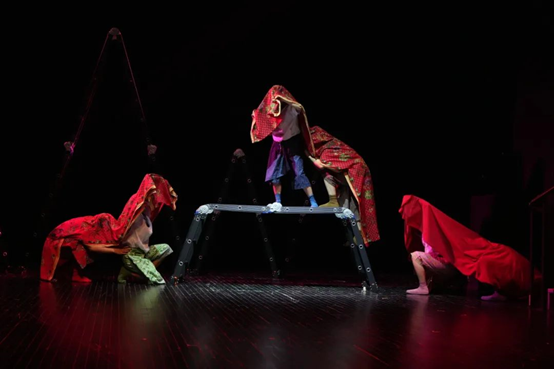
The play shifts the original Christmas Eve setting to New Year's Eve, incorporating Asian elements such as the famous Singaporean Merlion legend and the origins of Tanjong Pagar. The actors deliver their lines in multiple languages, including Chinese, English, the Minnan dialect, and integrated modern forms such as rap performances, creating a unique cultural style that results in a creative aesthetic experience.

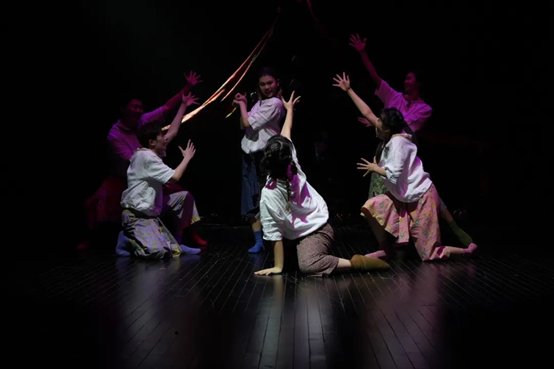
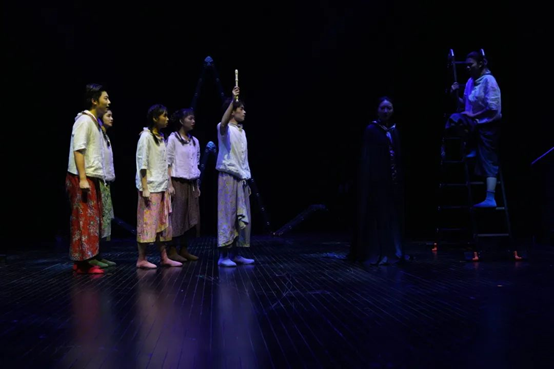
The stage design is characterized by its simplicity and rich imagery: red silk is used by actors to represent concrete images such as ocean waves, creating the illusion of a storm at sea. A specially designed ladder, which is a central element of the play, serves not only as a common prop but also transforms into various shapes, seamlessly integrating with the performance and facilitating the actors' stage presentation. The music and sound effects further enhance the play's expressiveness and impact. Numerous theme songs and transitional music pieces add to the dramatic tension and offer the audience a perfect audiovisual feast.
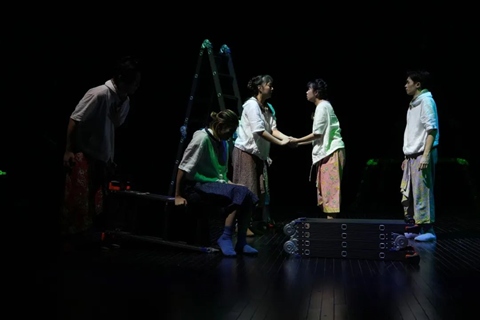
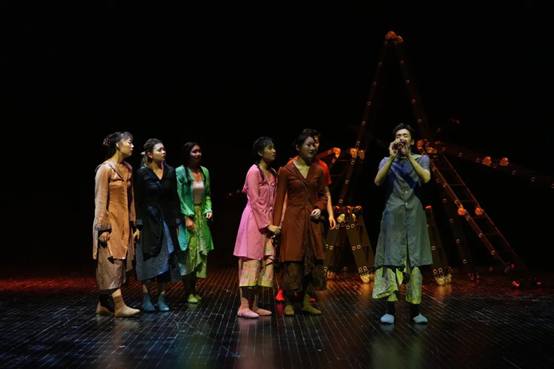
Following the performance, the cast and crew of THE BLUE BIRD engaged in a post-show discussion with the audience, sharing the creative process behind the play and their insights on script creation and stage construction.
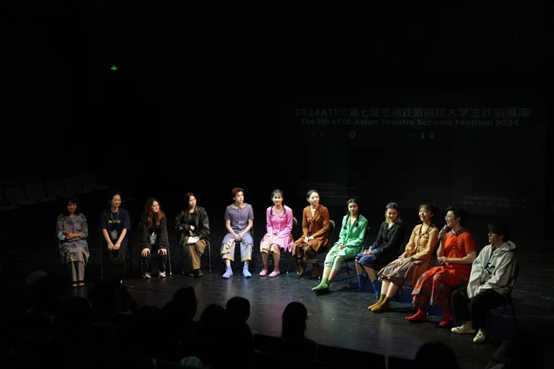
HATASHINI, Nihon University College of Arts, Japan
On May 19, students from the Department of Arts at Nihon University performed HATASHINI at the small theatre of the Changping Campus as part of the Asian Theatre Schools Festival. The play is inspired by the Chrysanthemum Promise from Akinari UEDA's Tales of Moonlight and Rain from the Edo period, which draws on the Ming Dynasty's Feng Menglong's CLEAR WORDS TO ILLUSTRATE THE WORLD, or YUSHI MINGYAN and explores the transcultural adaptation significance, delving into emotional resonance beyond time and space.

HATASHINI delves into the exploration of the protagonist's quest for the spirit of sacrifice embodied by the character Soemon in the original work, reinterpreted through a modern perspective and artistic techniques. The play adjusts character configurations to enhance the status of female characters and challenges traditional boundaries by blending classical language with modern costumes, aiming to explore profound emotional values in a modern context.
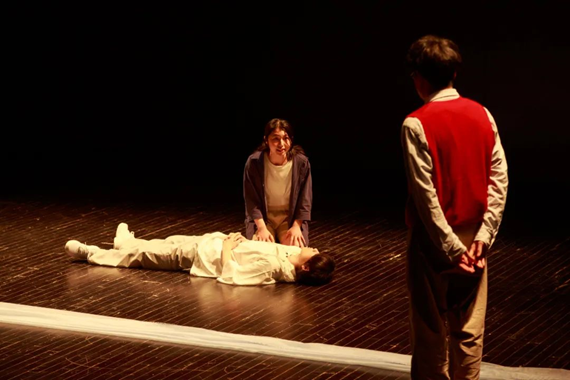
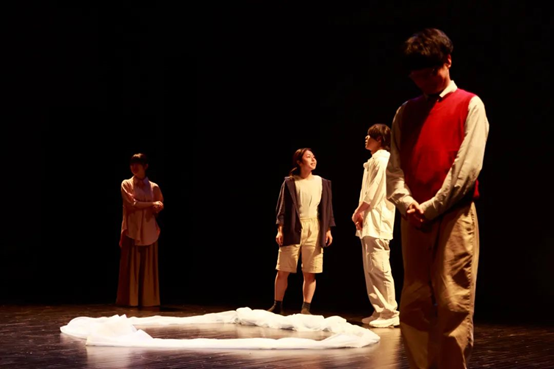
In the performance, the emotional tension of Soemon becomes the core, with the theme of keeping promises between him and Soemon permeating throughout. When Soemon fulfills his promise with his life, Soemon falls into a dilemma of self-questioning, and this psychological struggle is visually expressed through stage symbols — the appearance of a white soul and the use of red brocade. The red brocade symbolizes blood ties, while white signifies purity and misfortune. The intertwining of the two forms an ‘∞’ pattern, symbolizing a deep connection and trust beyond blood ties. The play also interweaves the storyline of Soemon's sister Yuki and her friend, adding layers to the exploration of life, death, and loyalty, showcasing the complex interaction between family warmth and practical considerations. Ultimately, the play is not only a profound exploration of the concept of ‘loyalty’ but also a hymn to trust and sacrifice in human nature, reminding people to carefully choose their companions while conveying messages of hope and rebirth.

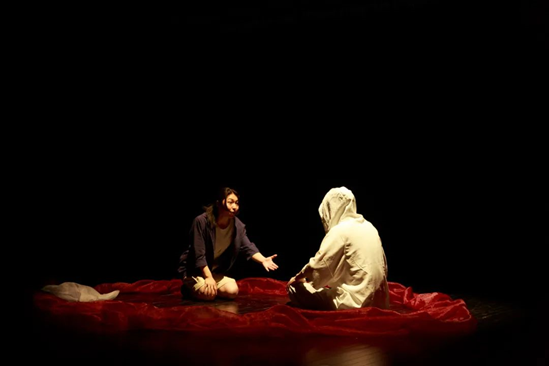
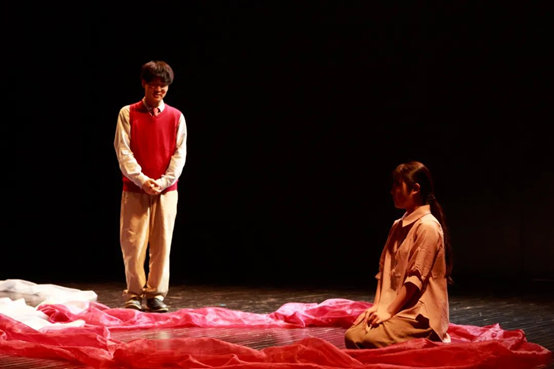
Through carefully crafted stage elements and profound thematic exploration, HATASHINI is not only a cross-cultural artistic practice but also a spiritual awakening, guiding the audience to reflect on seemingly distant but fundamentally shared values in contemporary society.
THE TALE OF A TERRAPIN, Chungwoon University, Republic of Korea
On the afternoon of May 19, the play THE TALE OF A TERRAPIN brought by Chungwoon University from Republic of Korea was performed at the theatre centre of the Changping Campus. Adapted from the Korean fable ‘The Tale of the Rabbit,’ it is a fable that anthropomorphizes various animals such as rabbits and terrapins, telling the story of a terrapin registrar who leaves his hometown to fetch the liver of a rabbit to cure the king's illness.

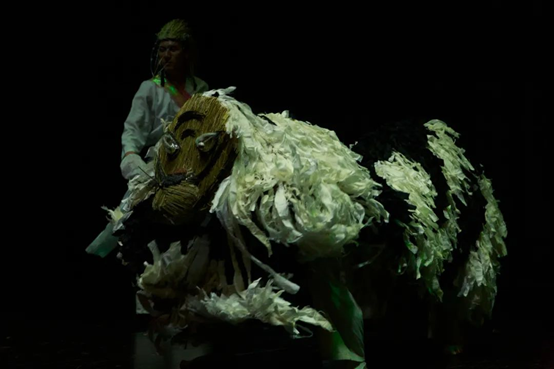
The actors conveyed the story through their body movements: the plot of the dragon king dispatching the terrapin registrar to obtain the rabbit's liver being foiled by the rabbit, who substitutes feces for the liver, deceiving the terrapin. Eventually, the dragon king, who eats the fake ‘rabbit liver,’ miraculously recovers. As the rabbit escapes and the dragon king survives, in a joyous atmosphere, the actors invited the audience to join them on stage to dance and celebrate.
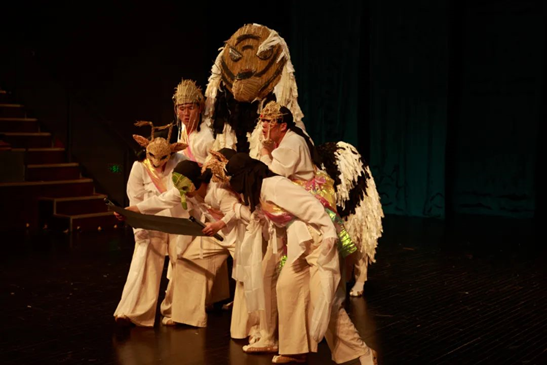
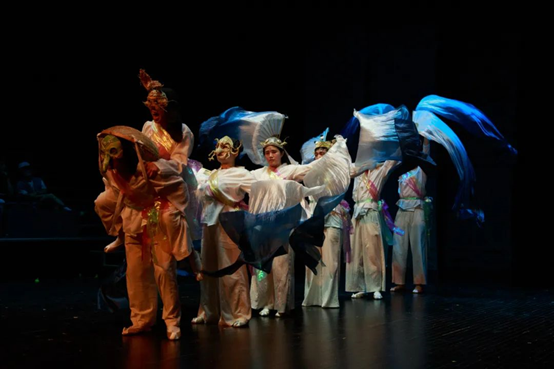
The stage setting, costumes, and props of the entire play are simple yet interesting. A clever use of white cloth as a longitudinal canvas is made, with actors drawing the rabbit's portrait live with ink on it. In the underwater world segment, a basket is used as the terrapin's shell, creating a special comedic effect through the wearing and removal of the basket. Additionally, the use of blue gradient fluttering ribbons is employed to depict the rippling underwater scene.
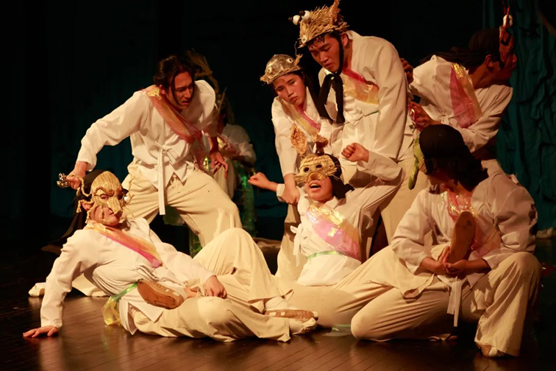
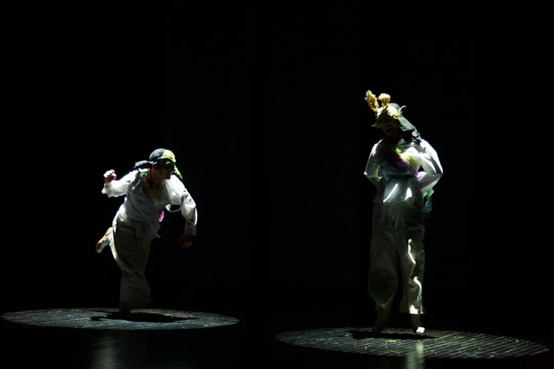
During the post-performance discussion, the creators stated that this adaptation was a modernization of traditional stories, combining traditional elements such as Korean mask drama with modern K-pop music elements. After interacting with the audience, the actors returned to the traditional stage performance, creating a distancing effect in which the distance between the actors and the audience constantly fluctuated, adding depth to the performance.

ECHO OF THE HISTORY, Shanghai Theatre Academy, China
On the evening of May 19, on the proscenium stage of our Changping campus, the Shanghai Theatre Academy's drama team presented the wonderful musical theatre piece ECHO OF THE HISTORY for the audience.
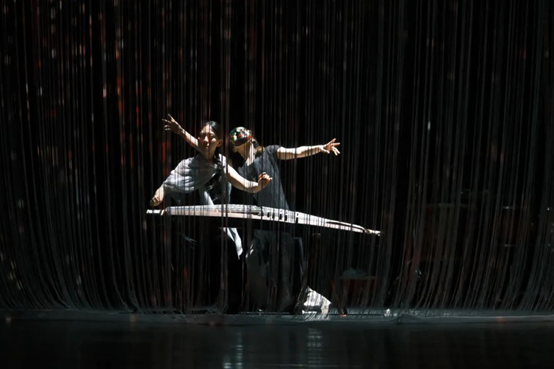

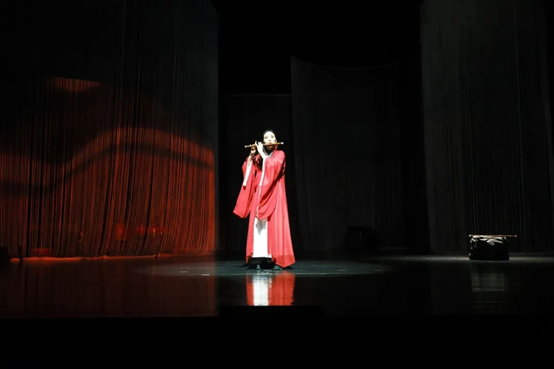
The script is based on the path of Daoist charm: Dao begets one, one begets two, two begets three, and three begets all things. The six cycles of reincarnation are understood only by immersing oneself in this matter to comprehend the six realms. The first act sees sentient beings, contemplating the thoughts of heaven and earth, homeland, and hometown from an outsider's perspective; the second act sees oneself, pondering love, friendship, and family from an introspective perspective. The worldview presents two layers of meaning: first, it provides the possibility of unity in the source, revealing the opportunity for immortals to experience the world, and second, it returns to the logic allowed by the world in exploration, where the word ‘Dao’ cannot be spoken or translated. In each stage of experience, different styles of presentation in auditory and visual aspects complement each other, making adjustments to the elements and restoring the appearance of different situations in different worlds with the assistance of stage effects. In the first act, to represent the universal perspective of people, characters other than immortals wear various masks. However, when the six emotions sprout, by the next stage of experience, the masks are gone, and people face each other with their real faces, engaging in deeper communication, layer after layer. As a theatre work primarily constructed with music, it does not assert its own views decisively but, like Dao, nourishes all things without speaking. Within the vast space of the theatre, the ‘crowd’ interprets the same ‘narrative’ while constructing their own understanding with this unique material, yet entering the ideal realm depicted by the creators like tidal sand filtering.
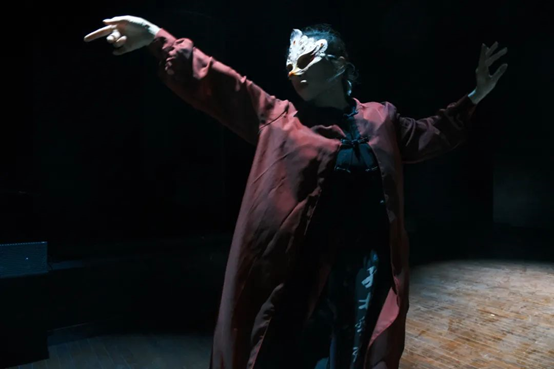
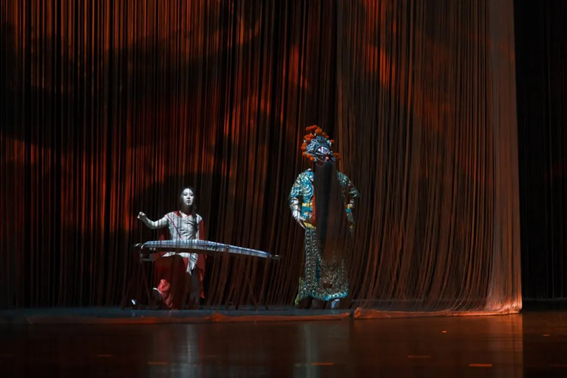
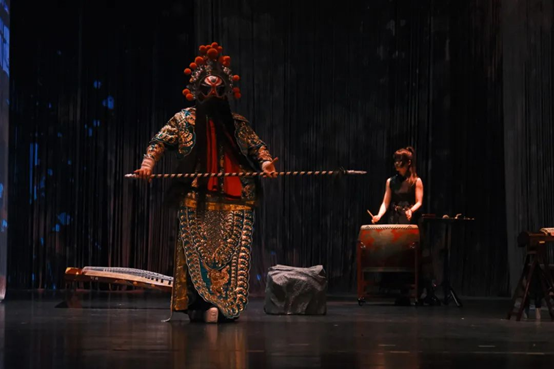
The creative team dedicated their hearts into this innovative theatrical endeavor. In addition to addressing technical issues such as preserving the original sound of instruments in the vast proscenium theatre space, harmonizing the connection between narrative and musical elements was also an important concern. For this reason, the team carefully tailored the arrangement of the music, adapted classical pieces, and added new original compositions. Director Zhang Haoyu added that further exploration in narrative aspects based on this play is a future direction.

TRANSITION, by LASALLE College of the Arts, University of the Arts Singapore
On May 20, LASALLE College of the Arts from Singapore presented a dance drama titled TRANSITION (SOPAN and GENESIS) at Small Theatre 2 of the Changping campus. This production combines Malaysian traditional ethnic elements with modern bodily concepts. It consists of two independent yet closely connected stories. With exquisite stage lighting and ethnic sound effects, the dancers' solid dance performances create a mysterious atmosphere, expressing the choreographer Fairul Zahid’s consistent creative core—contemplating the meaning of ‘judgment’ in contemporary social issues.
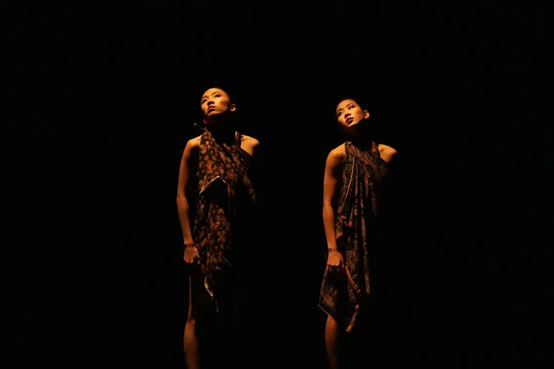
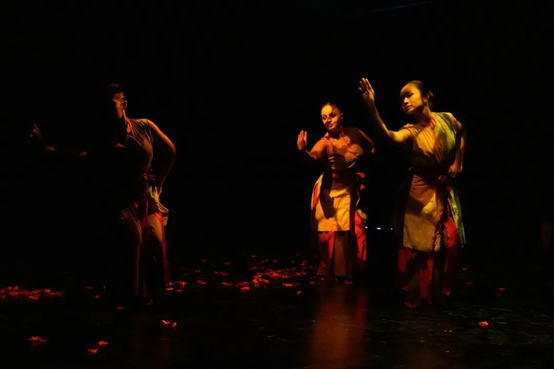
The production tells two different but interconnected stories of traditional customs and narratives: In SOPAN, performed by two actors draped in ‘long wax-dyed cloth’ adorned with Malaysian floral motifs, traditional wind instruments, hand drums, and flower lights projected onto the stage floor combine with the dancers' changing movements to construct a discussion on marital judgment in a traditional matrilineal society in Malaysia. GENESIS, performed by a total of five actors, reconstructs rituals from Malaysian tradition in an extremely contemporary manner, using only three light sources as props. These two parts of the story are organically combined, forming such a special ethnic totem. Apart from the story structure itself, there are many creative details worth contemplating.
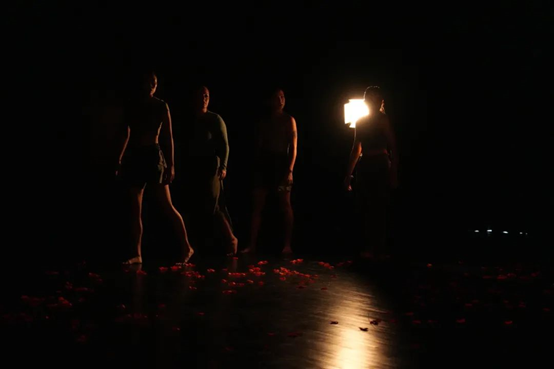
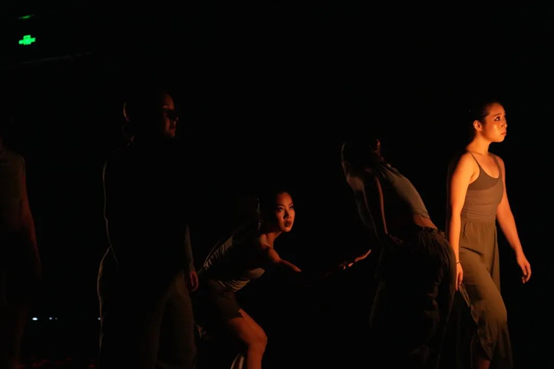
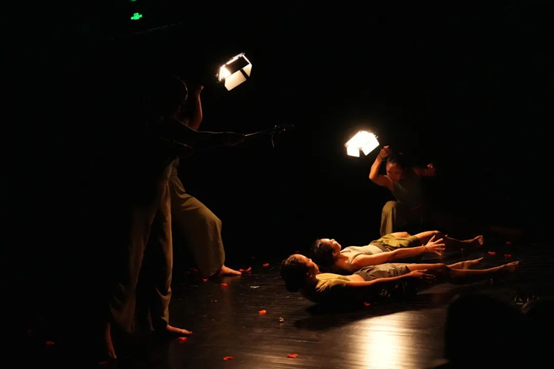

Finally, in the post-performance discussion, the director elaborated on the evolution of dance categories he studied and the importance of integrating traditional ethnic culture with modern choreography in his works.
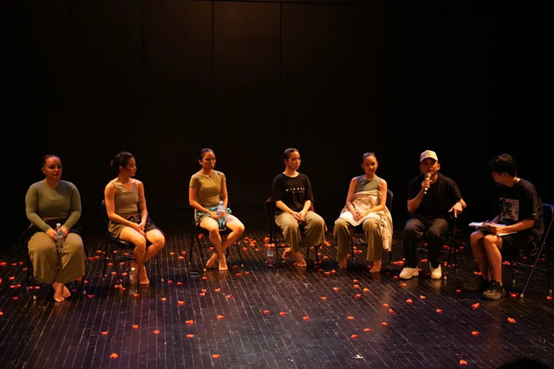
SINK, College of Fine Arts, University of New Mexico, the USA
On May 20, the University of New Mexico from the USA presented a fantastic theatrical piece titled SINK at the thrust stage theatre of the Changping campus.
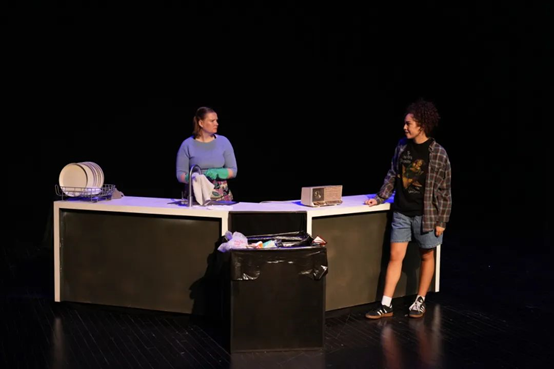

SINK is a comedy-infused sci-fi nightmare created by director Rhiannon Frazier, drawing inspiration from the structural format of traditional Japanese horror novels. Starting from mundane everyday dialogues, the production gradually delves into the core ideas of the work through its exposition, development, twist, and conclusion—exploring profound issues such as the authenticity of personal experiences in today's rapidly developing and alienating society. As the story progresses from light-hearted daily comedy towards horror and sci-fi, it delivers an unforgettable and novel experience for the audience.
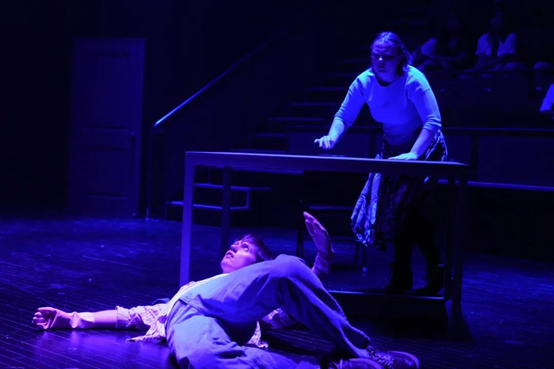
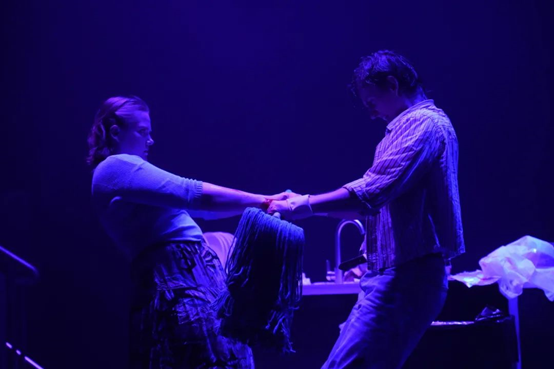
Audiences can also explore the innovative significance of SINK through its details. Firstly, the characterization of the central character, Annie, seems to expand the deeper meanings of the story through her actions. Annie is always ‘washing dishes,’ wearing dishwashing gloves and displaying them on specific occasions. However, when she clarifies the truth about her wandering through time and space to Molly and Paul, she takes off the dishwashing gloves. This subtle prop setting symbolizes Annie's imprisonment, using such ordinary props to reflect the core of the entire play—the impact of explosive social media in the post-pandemic era on human beings. Despite being unable to truly immerse themselves in it under intense stimulation, it's like putting on dishwashing gloves, making it difficult to touch reality.
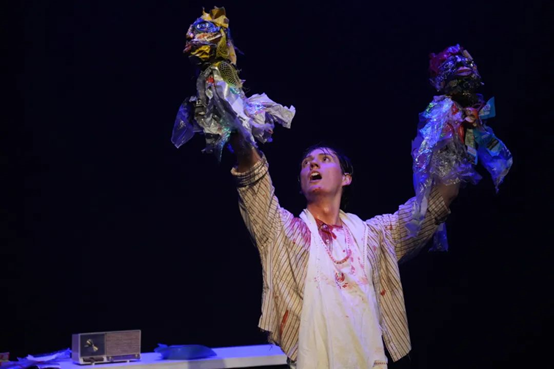

Additionally, during the post-performance discussion, students' enthusiastic questions injected new vitality into the successful performance of SINK. Students linked the concept of ‘multiverse’ from the movie EVERYTHING EVERYWHERE ALL AT ONCE with the story structure of SINK, sparking further discussions between the director, actors, and audience.
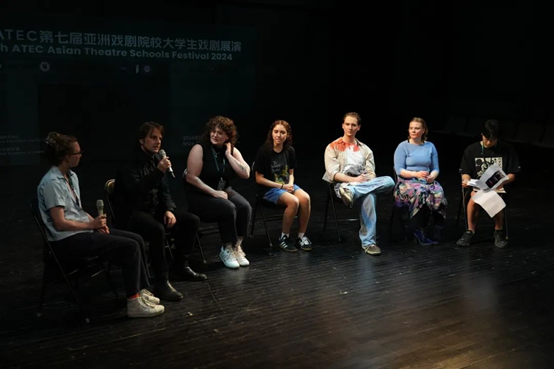
KHUKHUU NAMJIL, Mongolian National University of Art and Culture, Mongolia
On May 21, the Mongolian National University of Arts and Culture presented the performance KHOKHOO NAMJIL at the thrust stage theatre of the Changping campus as part of this year's festival. This production is based on ancient Mongolian mythology, where the legend of the first morin khuur (horsehead fiddle) also originates. Director Ariunsan Byambadorj chose to adapt this myth for two reasons: first, because he had read the story during his childhood, and second, because the mythical elements and effects it contains inspired his creativity. The director hopes that the main lesson the audience takes from this play is that jealousy can distort the heart and soul of humanity. To portray this metaphorical mythological characteristic, the director chose the ‘shaman’ as a representative figure of the homeland.
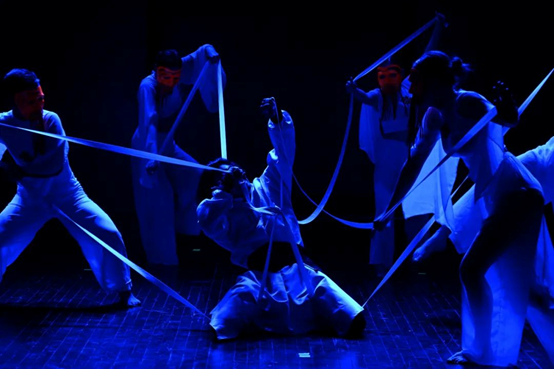

The play incorporates the use of the ‘aman khuur’ instrument for musical performances, dance movements, and square drums. Aman khuur is an important traditional instrument in Mongolian culture through which communication with spirits can be established. The distinctive square drum used in the play is a traditional and significant sacred object, representing the misunderstanding and hatred of Khukhuu Namjil's wife towards her husband. The chorus in the play utilizes body movements combined with the drum, symbolizing the harm inflicted on Khukhuu Namjil. Additionally, the production showcases Mongolian traditional features in costumes, props, music, and dance. The director aimed to enrich the theatrical piece with various types of Mongolian music, representing Khukhuu Namjil's different experiences and states of mind through the diverse rhythms. Mongolian traditional dances, such as Biyelgee, also receive prominent representation in the play.
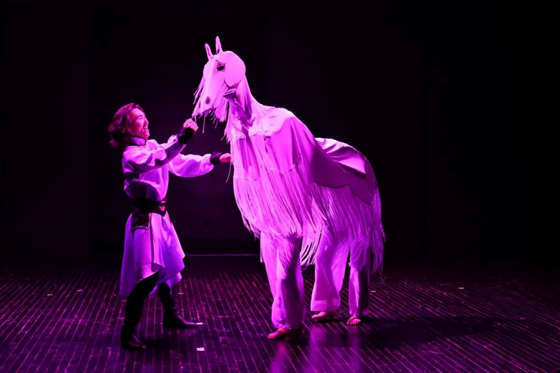

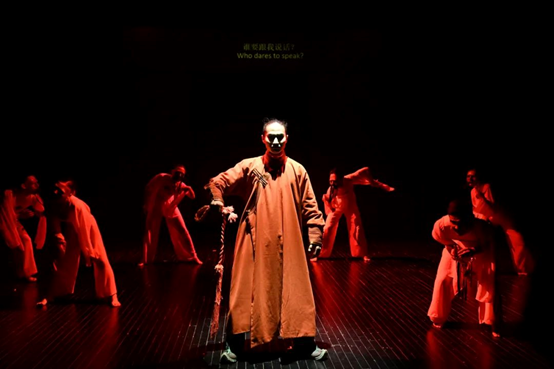
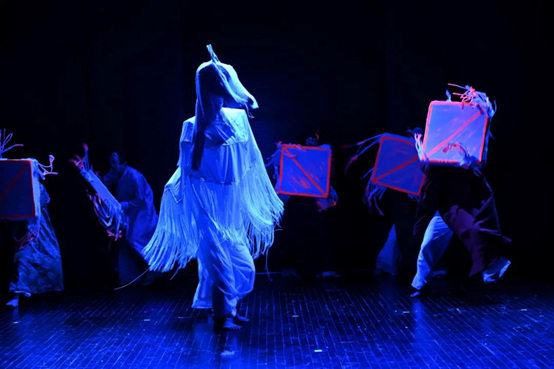
Whether during the curtain call or in the post-performance discussion, the audience responded with enthusiastic applause and cheers, demonstrating their strong appreciation for the performance and the energetic atmosphere created during the event.
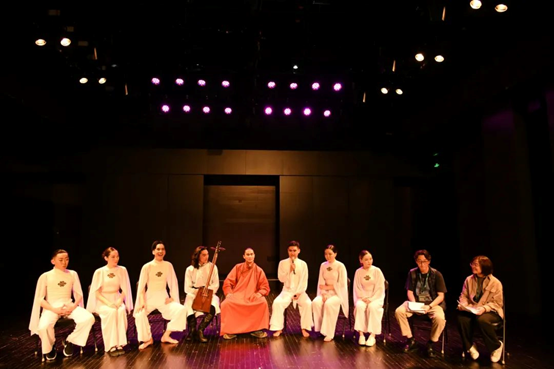
DREAM, ECHOES, by Chung-Ang University Department of Theatre, Republic of Korea
On the afternoon of May 21, Chung-Ang University from Republic of Korea presented the play DREAM, ECHOES at the proscenium theatre of the Changping campus as part of this year's festival.
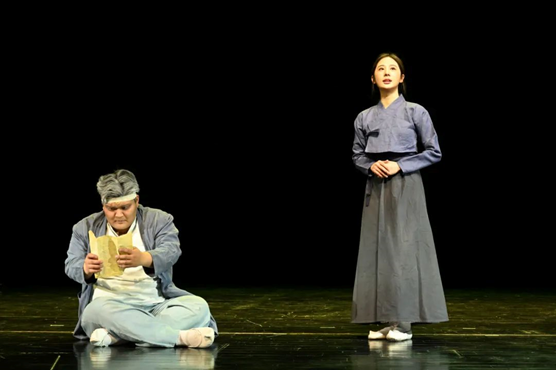
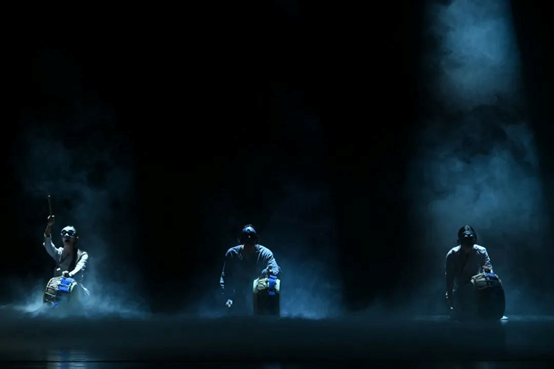
DREAM, ECHOES draws inspiration from a widely circulated story in Asia. The story revolves around a situation where a man hesitates to cross a river, ultimately does so, falls into the river, and dies. This story, known domestically as ‘The Man Who Did Not Cross the River,’ is one of the poems in the ‘Songs of Harmony and Understanding,’ and is the earliest recorded folk song introduced from Korea to China.

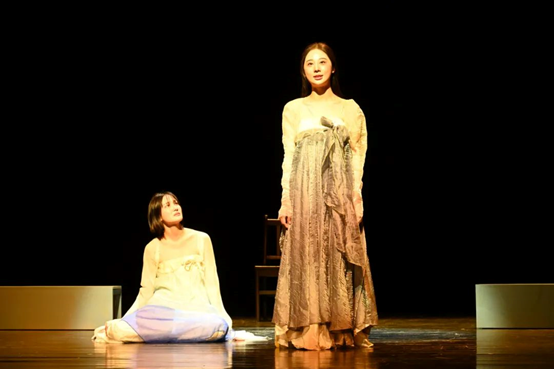
The play begins with a projection of this poem and then narrates two stories from different eras. One story is about Baeksu, an ancient man summoned by the king, who, fearing to suffer the same fate as his father, who was killed by the king, chooses suicide. The other story is about Gowun, a member of an idol group who, tired of the idol life, chooses to commit suicide after being questioned by prosecutors and another group member, Muyoung, about the whereabouts of their missing member, Doa. Before attempting suicide, Gowun hallucinates a conversation with the deceased Doa, regaining the courage to live. In the story of ancient Baeksu, traditional Korean ethnic costumes and daily life are portrayed on stage, while in the modern story, the audience learns about Korean pop music, idol culture, and behind-the-scenes aspects of the Korean idol industry.
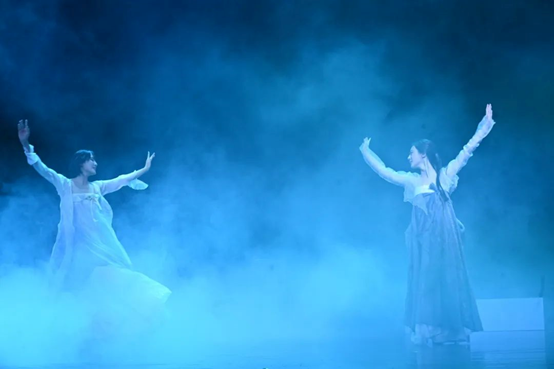
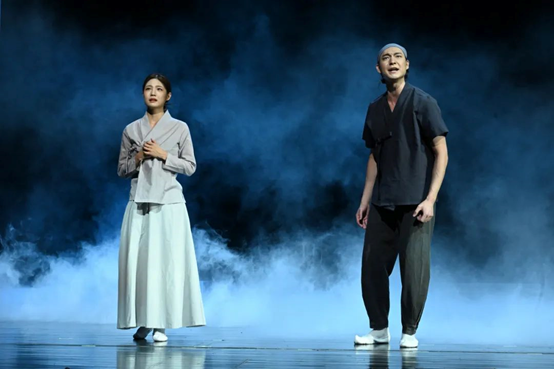
The director of the play mentioned that in the pursuit of art, everyone encounters the same difficulties and questions. The play demonstrates that despite living in different eras, people have always persisted in noble artistic pursuits and beliefs. The poetic beauty of ‘The Man Who Did Not Cross the River’ at the beginning and the lingering sound of Baekshu at the end reflect the process of seeking the meaning of the universe through art and human endeavor.
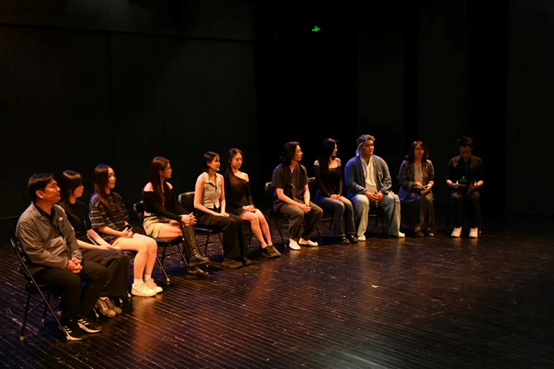
WOMAN'S DESTINY LIKE A RAIN DROP, by Hanoi Academy of Theatre and Cinema, Vietnam
On the evening of May 21, Hanoi Academy of Theatre and Cinema from Vietnam performed the play WOMAN’S DESTINY LIKE A RAIN DROP at the Changping campus's thrust stage theatre as part of the festival.
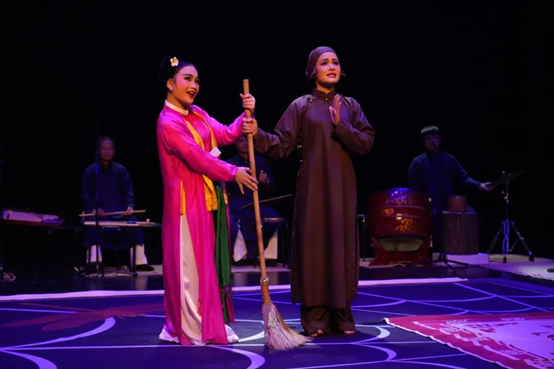


The Hanoi Academy of Theatre and Cinema selected three selected segments from traditional Vietnamese satire plays to showcase the destinies of three different women during Vietnam's feudal period. Miss Màu, a wealthy daughter of a feudal family, rushes to the forefront of resistance against oppression. She boldly confesses her love to a handsome monk in the temple, but after being rejected, she gives birth to a child with another man. Forced by reality, she has to falsely claim that the child is the monk's. However, the monk is actually a woman who was wrongfully accused of murdering her husband and sought refuge in the temple. Now, she is falsely accused of having an affair with Miss Mau and giving birth to a child, adding another layer of injustice to her plight. Another woman, named Suy Van, resorts to pretending to be insane to escape the imposed traditional marriage system and to free herself from her controlling mother-in-law. The play, through its impressionistic stage setting, melodious and poignant traditional music accompaniment, and stylized actions of traditional satire, reveals the tragic destinies of women bound by the shackles of secular norms in the olden days.
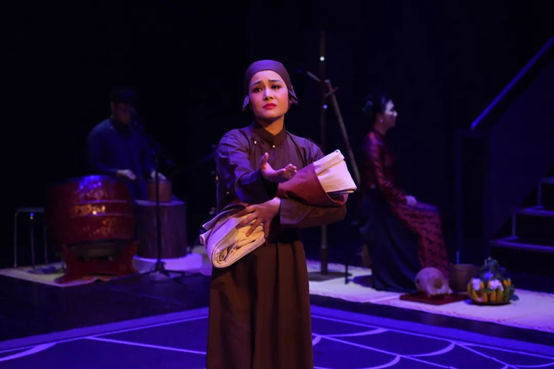
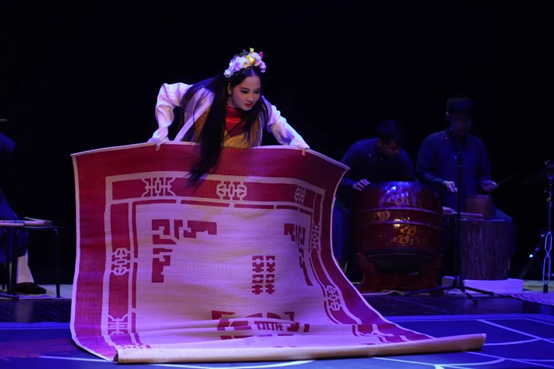
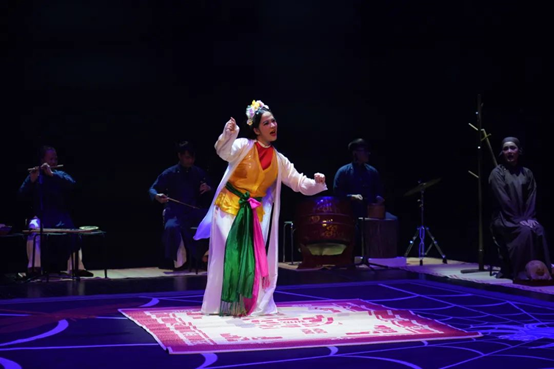
During the post-performance discussion phase, the audience's question about ‘how to adapt traditional plays to modern theatres’ caught the interest of the Academy’s president, Nguyen Dinh Thi. He mentioned that theatre practitioners worldwide are striving to modernize traditional theatre, and WOMAN’S DESTINY LIKE A RAIN DROP is also dedicated to reconstructing classics. While retaining the characteristics of satire, such as traditional music ensembles and stylized actions, the play underwent extensive adaptations in terms of theatrical language, music, and physical movements to make the pacing, singing, recitations, and actions softer and more modern. He emphasized that satire itself is Vietnam's most representative indigenous theatrical genre, capable of fully showcasing the lives and sentiments of the Vietnamese people. The Vietnamese delegation also added that the traditional narrative style of actors entering and exiting the stage sequentially, introducing characters, and changing costumes onstage attempts to convey to the audience that “actors are actors, not the characters themselves,” paying homage to and restoring the classic satire program.
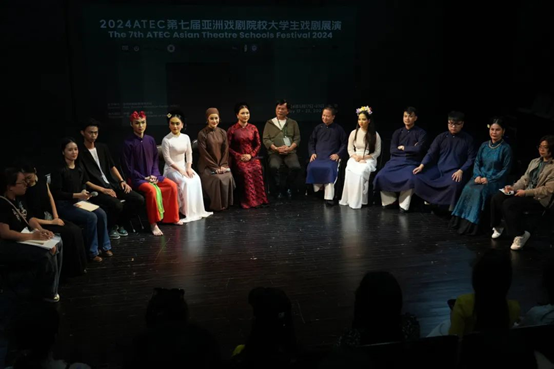
--------------------------------WORKSHOPS ON THEATRE--------------------------------
EVOLUTIONARY VISION: EXPLORING TRADITIONAL AND CONTEMPORARY TRENDS IN THEATRE DESIGN
by Professor Gillian Choa
On May 19th, Professor Gillian Choa, Director of the Hong Kong Academy for Performing Arts, conducted a theatre workshop titled ‘Evolutionary Vision: Exploring Traditional and Contemporary Trends in Theatre Design’ at the Small Theatre.
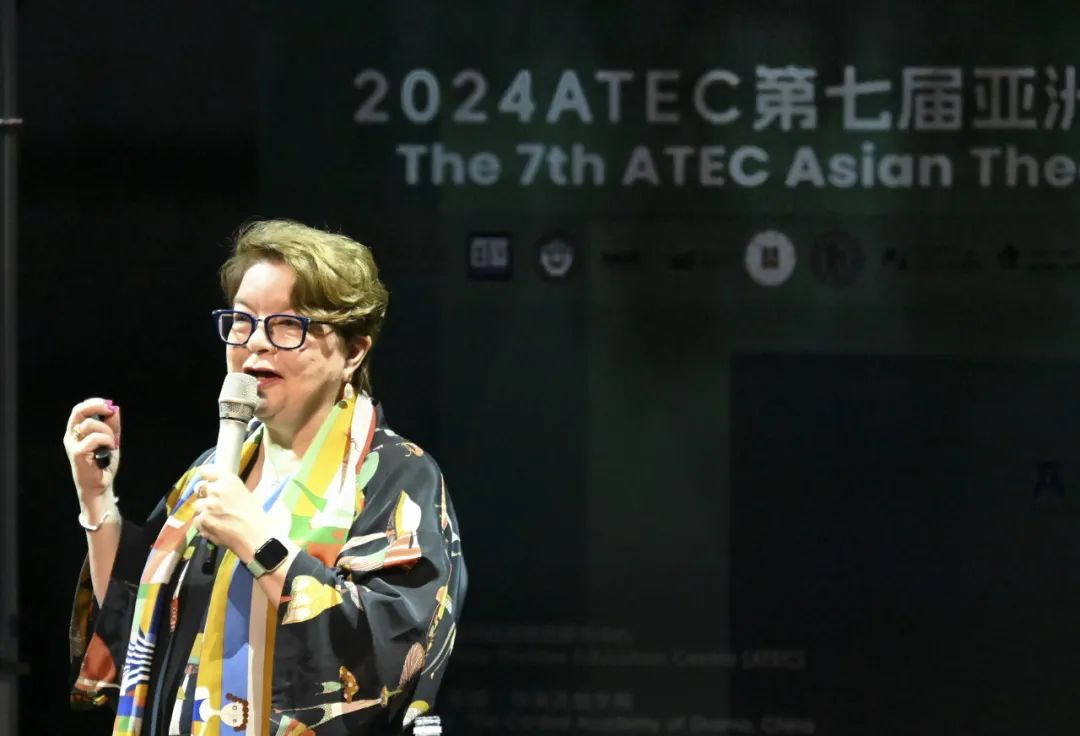
Prof Gillian Choa worked extensively as set and costume designer, scenic artist, lighting designer and director in theatre; art director/decorator, costume designer/supervisor, and image director in television, advertising and film. As a passionate educator, Prof. Choa became the first woman, and the first Hongkonger, to head The Hong Kong Academy for the Performing Arts in 2021.
Professor Choa structured her presentation around the evolution of stage design. She discussed the transformations in stage design from the late 19th century to the early 20th century, influenced by realism and naturalism, emphasizing the realistic reproduction of environments and backgrounds. With the widespread use of electricity on stage, details in stage design became more refined. During this period, heavily influenced by naturalism, there were dissenting voices such as Edward Gordon Craig, a pioneer of modern art theory, who advocated for bold and experimental designs. Craig believed directors were the true artists, with actors as mere assistants, and he aimed to engage audiences through minimalist stage settings. In the 1920s and 1930s, with the introduction of ‘alienation effect’, the idea central to Brecht, stage design gradually moved away from exaggerated detail towards a focus on overall aesthetics, incorporating new forms such as projections and slides.
Continuing her narrative into the mid-20th century, Professor Choa highlighted the diversification of design methods with the rise of experimentation, abstraction, and symbolism featuring more inspiration for stage art design. She particularly emphasized the significant stage art pioneer Ralph Koltai during this period. Professor Choa showcased examples of Koltai's stage art designs known for their minimalist aesthetic characteristics and innovative use of materials, visually striking and unconventional, challenging traditional stage design norms.
Moving into the 21st century, Professor Choa shifted the discussion to the sustainability of stage art design. She shared various examples of sustainable stage art designs and highlighted student projects from the Hong Kong Academy for Performing Arts that explored the use of environmentally friendly materials in stage art, while also advocating for greater environmental awareness. For students aspiring to become stage designers, Professor Choa encouraged steadfastness in design, advising them to communicate more with production teams to remain loyal to their artistic visions. She concluded, ‘Designers are solitary beings, but a strong team is crucial to the final presentation.’
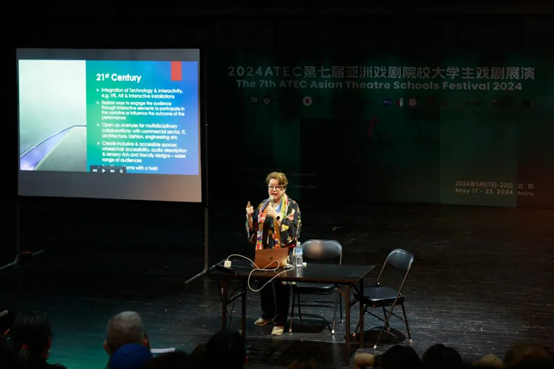
EXPLORING THE ART OF PEKING OPERA
by A.Prof. Sun Shangqi
On the morning of May 20, Associate Professor Sun Shangqi from the CAD’s Department of Peking Opera conducted a workshop, as the first of two speakers from the department. Titled as ‘Exploring The Art of Peking Opera’, the workshop brought the audience a feast of traditional Chinese art.
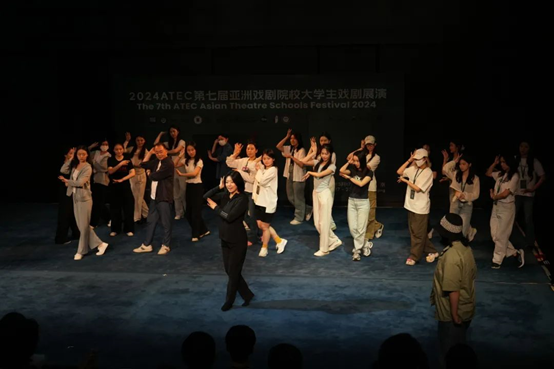
Sun first explained the cultural background and artistic features of Peking Opera to the audience. Peking Opera is the most influential and widely distributed among the 348 types of Xi Qu genres in China, acclaimed as the ‘national essence’ of art. With its unique performance style, it has become a brilliant gem in the treasure trove of world art. What distinguishes Peking Opera from other art forms is its complete system of performance, which uses singing and dancing to depict life. This system is not a mere representation of life but rather a reconstruction, removing all irrelevant factors and reshaping life through concentration, condensation, exaggeration, and distortion into a unique artistic style. This performance technique, known as the ‘Four Skills, Five Methods’, is essential professional qualities for Peking Opera actors. The ‘Four Skills’ are singing, reciting, acting, and fighting, and the ‘Five Methods’ are hand gesture, eye expression, body movement, footwork, and their techniques.

After the explanation, Sun Shangqi vividly demonstrated and elaborated on the ‘‘Four Skills’ in Peking Opera using excerpts from ‘The Heavenly Maid Scatters Flowers’ and ‘The Crossroads Inn’. He also showcased gestures, eye expressions, body movements, stage steps, and techniques through the performances by students of Peking Opera. The excellent explanations by the teacher and the solid basic skills of the students garnered continuous applause and praise from the domestic and international audience.
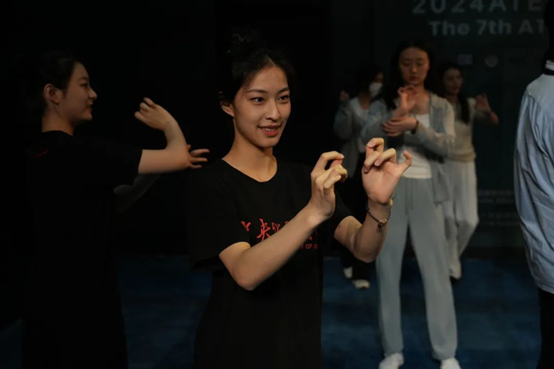
Finally, Sun Shangqi led the audience in experiencing how to use Peking Opera techniques to portray an ancient lady preparing to go out. The audience actively participated in learning and expressed that through every gesture, smile, and movement, they appreciated the charm of traditional Peking Opera.
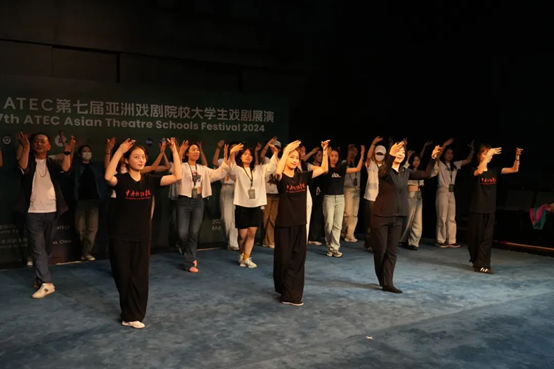
THE BEAUTY OF 'JING' IN THE REALM OF CLASSICAL PEKING OPERA
by First-class Actor Zhao Yongdun
In the second session, Zhao Yongdun, a first-class actor from the Academy's Department of Peking Opera, took the stage and lead the students in a class-style performance, allowing the audience to appreciate the beauty of the role of 'Jing' in classical Peking Opera.

Zhao Yongdun used ZUO ZHAI as an example to vividly showcase the immense charm of the 'Jing' role in Peking Opera. He also guided students in performing scenes from REED MARSHES and STEALING THE IMPERIAL HORSE, recreating the scenarios of the operas.
In their singing and recitations, the students strived for authentic enunciation, beautiful pronunciation, and expressive delivery, making it enjoyable and thought-provoking for the audience.
In their acting and fighting, they aimed to convey the characters' personalities and emotional worlds through every stance, gesture, and glance, immersing the audience in the storyline and earning continuous applause.
Zhao Yongdun accompanied the students by mimicking Peking Opera instruments, constantly correcting their singing, movements, and expressions, and demonstrating himself, teaching by example.
Subsequently, Zhao Yongdun explained to the audience the facial masks, which are the 'ID card' of the 'Jing' performance art, guiding students in painting the 'Zhang Fei' mask, and leading the audience to understand and appreciate the facial mask art of 'Jing' in Peking Opera.

The audience showed great interest, asking many questions, which Zhao Yongdun answered one by one, explaining the ever-changing art of facial masks.
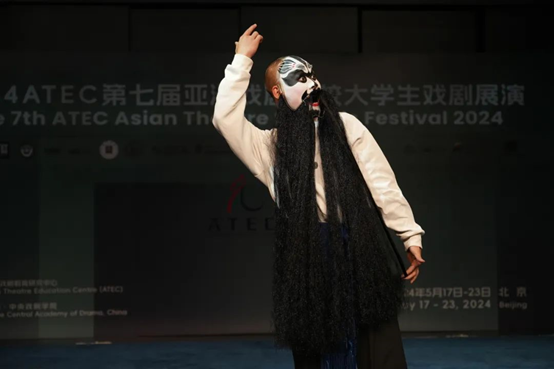
Finally, Zhao Yongdun invited the audience to experience the specific performance forms of 'Jing,' enhancing their comprehensive understanding and appreciation of 'Jing' art, showcasing the historical depth and unique charm of traditional Chinese art.
The audience responded enthusiastically and actively participated, bringing the workshop to a close in a lively atmosphere.

ACTING & MUSIC ACCORDING TO NATYASHASTRA
by Chittaranjan Tripathy
CONTEMPORARY INDIAN THEATRE
by Amitesh Grover
On the morning of May 21, the National School of Drama, India, conducted a workshop in Theatre 1, focusing on three chapters: CONTEMPORARY INDIAN THEATRE, ACTING & MUSIC ACCORDING TO NATYASHASTRA, and PVM METHOD – BOSE ELABORATIONS.

The first part of the workshop was led by the Director, Chittaranjan Tripathy. He began by chanting an ancient Indian song, expressing humanity's tireless pursuit from the imaginary to the real. Mr. Tripathy focused on ‘Ancient Indian Performance Texts,’ highlighting the NATYASHASTRA. It is a treatise written 3500 years ago, and originated from four ancient Indian religions, involving knowledge of music, performance, astronomy, geography, medicine, etc. It is a cultural gem belonging to Indian nation. The text posits that performance consists of three elements: bodily language, dialogue, costumes, with the actor's understanding, concentration, and expressive ability being paramount.

Tripathy stated that when the text originated, people wanted to understand how the entire diverse universe was created, with philosophers discussing whether God created the world, which was humanity's pursuit of truth. Similarly, when an actor conceptualizes and performs a specific role, they are also pursuing truth on the performance level, meaning creating a new character from a psychological level, requiring actors to reach the realm of ‘ultimate performance form’ with a certain state of mind. Actors strive for a specific art's refined form, and based on this, performance diverges into two modes: realism and tradition, the latter encompassing many spiritual elements. As for ‘the power of performance,’ it refers to the actor becoming the character themselves. Performance must be imaginative, meaning actors must create a specific image in memory, crafting a montage called life, using imitation to shape a specific image in the performance.
Complementing performance is classical Indian music created by the Indian people. This specific music form did not emerge suddenly but rather evolved over several hundred years to form a unique profile. It does not use Western keyboard music or strings as its foundation but is composed of twelve musical notes that reflect India's glorious history. Tripathy also mentioned that the NATYASHASTRA foresaw stage management. Today, stage management has become a very popular course in theatre academies worldwide, just as India had the concept of stage managers 3500 years ago, similar to the Elizabethan era of Shakespeare in theatre.
Tripathy emphasized repeatedly that actors need strong concentration when creating characters, and increasing concentration can be achieved through yoga and meditation. He demonstrated on the spot how to adjust the performance state using breath and yoga, enhancing stage effects. Finally, Tripathy sang based on the breathing methods mentioned in the NATYASHASTRA, encouraging everyone to cherish their dreams and achieve their aspirations.

Associate Professor Amitesh Grover from the National School of Drama, India, took the microphone and began the second part of the workshop. He mentioned that a significant focus at the National School of Drama is modernizing the techniques outlined in NATYASHASTRA and imparting them to students. One of the outcomes of this effort is the book ‘Indian Acting Method,’ which advocates that students, when portraying a character, undergo rigorous training for a month. The day before the performance, students are restricted to expressing emotions through gestures rather than dialogue, employing a ‘de-verbalization’ approach to ensure audience comprehension and enhance their connection with the character.
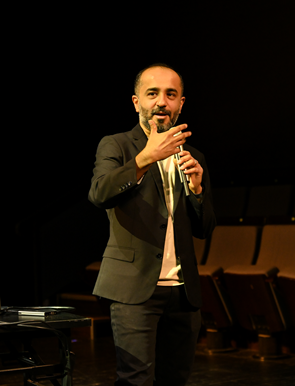
Another training method involves drawing eight different emotional blocks on the ground, prompting students to express corresponding emotions through body postures at various positions. This enhances the accuracy and flexibility of emotional expression by actors. The associate professor also showcased the evolution of the National School of Drama over the past fifty years, highlighting the transition of four different acting methods from Westernization to localization and indigenization. He emphasized that the school's leap forward is attributed to its ability to widely embrace and promote traditional performance methods from various regions of India, which continue to hold significant value for contemporary theatrical performances today.
